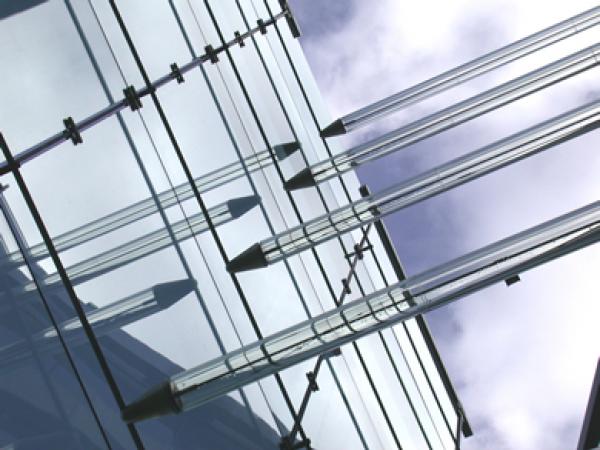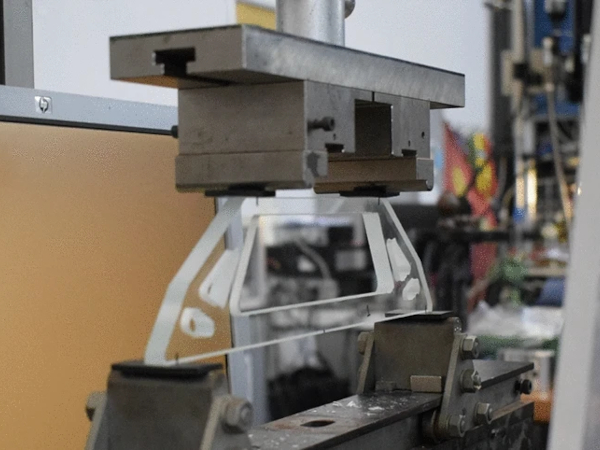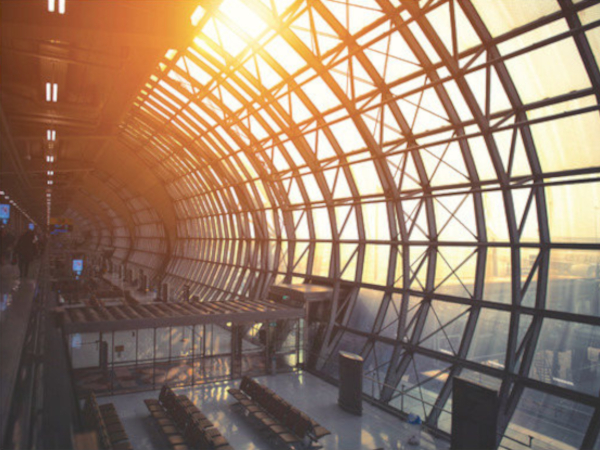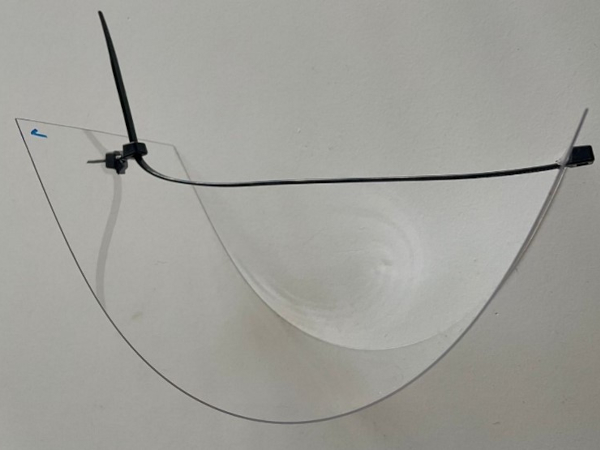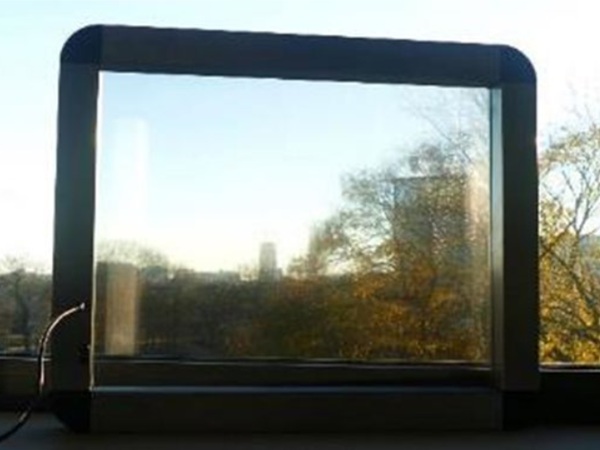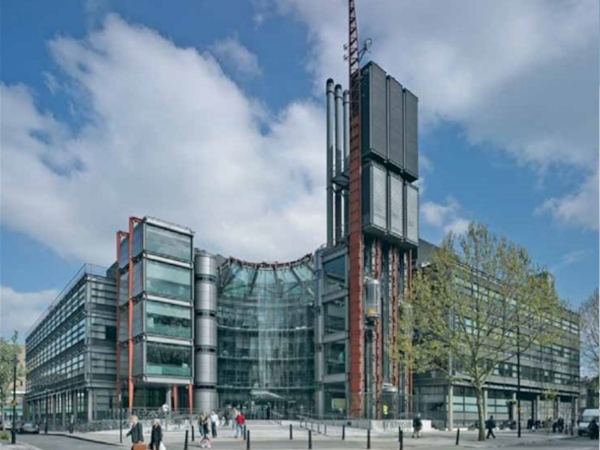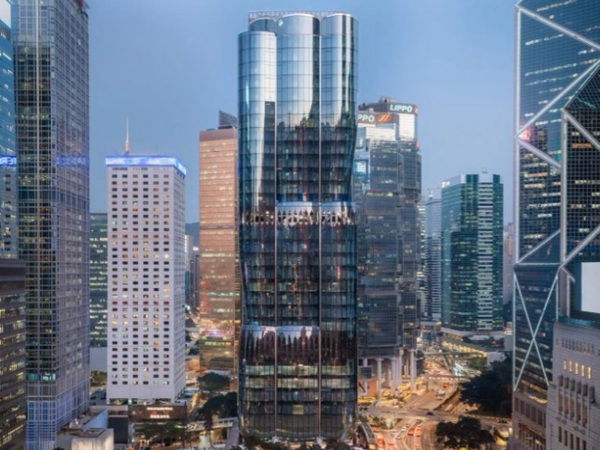The benefits of density in urban living are well understood and this compressing of private and public space calls for an exceptional approach to simultaneously activating the public and private realms with light. Since daylight is essentially a public resource, we believe that even as some daylight is lost to the built environment, there is a corresponding opportunity to insert phenomenal light into these contexts. Furthermore, these urban contexts have the full potential of becoming spaces whose beauty can become self evident.
James Carpenter will discuss how the public realm might be better enhanced and enriched by qualities of light integrated within the material fabric of these urban contexts. James Carpenter Design Associates and Carpenter Norris Consulting work to expand the possibilities of light within the thresholds provided by building envelopes and within specific ‘devices’ that act directly to reveal the presence of light.
Light as a unifying principal
Approaching the built environment from the point of view of phenomenal light allows James Carpenter Design Associates to consider the luminous qualities of glass and other materials and the experiential qualities of light as a primary concern of architectural design. From 1978 James Carpenter Design Associates has sought to bring together art, social context, engineering, construction innovation and a particular fascination with light and glass.
Often called upon as an interpreter of a site’s inherent natural character, the studio has proven its expertise in both the technical details of glass and the light information that can achieve this, while remaining focused on the transformative potential of integrating phenomenal light into the public realm. At the same time the studio has also brought into its practice fundamental concerns with climate engineering and other issues that have led the studio into the realms of ‘architecture’.
As a designer, JCDA’s interest in architecture is focused on the possibilities of creating human environments seamlessly informed by a sense of light and the constant feedback it gives us about our contextual experience. Light, like art does not require hidden techniques to project its ability to create wonder in the viewer. We strongly believe that this level of design is in fact beyond the conventional conception of architecture and, as in this studio’s practice, requires the unique merging of art, architecture, engineering and construction techniques.
.jpg)
©Tim Hursley
Israel Museum Jerusalem, Jerusalem, Israel, 2005-2010
Lead design of the expansion and renovation.
Observation
This focus upon integrating light within urban environments is founded on a sensitivity to light and its many phenomenal expressions. Some light phenomena such as the opposition effects in shadows, the Specter of Brocken, atmospheric refraction or mirages that exist in urban places but that are far more easily observed in environments where there is less distracting visual “noise” that competes with our observation.
James Carpenter Design Associates aims to apply its cross-disciplinary approach to reintroduce a synthesis of light as an integral urban experience, creating architectural design that weaves the experience of light into the urban fabric and using this intuitive language of light to provide program, wayfinding and other urban and architectural planning needs. Furthermore there are phenomena specific to certain environments not found in urban environments, or fully suppressed by those environments that we can aim to reintegrate into the public realm.
These phenomena elevate the entire experience of urban life, reclaiming the powerful human connection to nature and our inherent response to its power. This studio is interested in a kind of observation that is essentially experiential. This observation does not demand the interpretation required by our cultural artifacts, but connects us to what lies beyond the limitations of our knowledge – our place in the solar system. This experiential kind of observation informs every other cultural artifact that populates the urban fabric, providing the passerby with some sense of perspective within his/her daily experience.
.jpg)
©Brian Gulick
Periscope Window, Minneapolis, MN, 1995-1997
Window in private residence.
Quantity of Light – Quality of Light
Light as an element of human health is increasingly becoming an area of study. We believe that the quality of light, as much as the quantity of light available will become understood as being critical to the sense of wellbeing that can be associated with light. Everyone can describe the experience of a particularly striking urban environment and if you think of one of these it is likely that light plays a key role in the experience – it may even be a space with very little light.
Therein lies the art – the emotive sense of light innate within a site connects us to a powerful sense of the specificity unique to each individual place. Though we do analyze and quantify solar interaction within the urban environment, we are informed by a cross-disciplinary knowledge that encompasses materials; structure; human optics, perception and behavior; as well as the underlying science behind light phenomena. All these elements contribute to our efforts in bringing the powerful experience inherent in light into our daily urban experience and thereby enriching the public realm.
.jpg)
©Brian Gulick
Dichroic Light Field, New York, NY, 1994-1995
Art wall on a dense urban street.
Density
The benefits of density in urban living are well understood and this compressing of private and public space calls for an exceptional approach to simultaneously activating the public and private realms with light. Since daylight is essentially a public resource, we believe that even as some daylight is lost to the built environment, there is a corresponding opportunity to insert phenomenal light into these contexts.
Furthermore, these urban contexts have the full potential of becoming spaces whose beauty can become self evident. Denser environments do create less equitable distributions of light, but they also provide opportunities for the sensitive integration of a responsive materiality into this built fabric which can allow for a rich visual experience for those living there. In fact there are urban environments with the problem of an overabundance of light which similarly can be mediated by succinct design knowledge.
In either case an insightful treatment of the urban envelope can be used to redirect light to the areas where it is needed and furthermore reconnect us to a broader sense of nature.
.jpg)
©Stephanie Hui, JCDA
Light Entry Passage, Marina Bay Sands, Singapore, 2008-2010
Façade and entry passageway.
Light as an Organizing Principal
In nature, countless intertwined and evolutionary, environmental and ecological factors define an environment, but light always informs how we perceive and experience nature. Beyond soil quality and the ecological make up of a specific location, the daily and diurnal light can still be thought of as the defining measure of that ecology, organizing the entropic growth of various elements and process of the ecology.
Correspondingly urban light defines our behavior and even though we are very adaptable and feel ourselves once removed from pure entropy, the quality of light still defines the quality of life in urban settings. Even as we allow ourselves to be inundated by the inconsequential and thereby ignore the potency of nature in our presence, we are also very sensitive and recognize urban or natural places with beautiful qualities of light. This suggests that design can create a more successful public realm that better explores, manifests and celebrates light.
.jpg)
©Tim Hursley
Israel Museum Jerusalem, Jerusalem, Israel, 2005-2010
Underground passage with water feature light slot.
Glass and Landscape
Just as light organizes nature, glass can transpose the presence of nature into the public realm. It is interesting to note the relationship between the development of science and the exploration and manipulation of glass’ properties and optics. Humans have been exploiting glass properties for over 10,000 years through the development of obsidian tools, glass beads and vessels. One only has to think of the development of the lens and its use in the earliest telescopes in the late 16th Century to accept the deep connection between glass and the modern world’s expanded view of our planet and universe in both its material details and place within time and space.
My own interest in this history is in the fact that glass has been both an aesthetic tool manipulating materiality and light, and a scientific tool expanding the exploration of the universe through the observation of light. In each case glass is closely related to the observation of nature as it is revealed through light. In essence glass has the capacity to reveal the information possessed by light, and this information is deeply connected to nature. Today, I think we can agree that attentiveness to nature is essential to our humanity.
.jpg)
©JCDA
Luminous Glass Bridge, Marin County, CA, 1987
Proposal for a glass bridge.
Material/Immaterial
Though we think of glass mostly as a material, it can better be described as a state in which a material finds itself. Glass describes amorphous solids and resins in their glassy state (such as acrylic) as well as soda-lime glass, borosilicate glass, or even sugar glass. Although physicists studying granular materials or biologists studying polymer science are far better qualified to describe what ‘glass’ is, it is interesting to note that glass science is still in the process of describing and debating the very nature of glass. Beyond the problems defining glass scientifically, I am interested in the simultaneity that glass possesses.
It is a dense material with the ability to appear weightless and its mass is literally transparent, but once we understand the full range of optical properties found in glass - transparency, reflection, refraction and diffraction – it becomes evident that glass has the potential to capture and represent many levels of light information simultaneously, and that this information can also be deployed across the depth of the glass.
The projects I survey below, consistent with the overarching concerns of JCDA’s practice, have in common an exploration of volumetric light. Because it straddles materiality and immateriality, glass has often been our material of choice due to its ability to expand and reveal itself within an interstitial space, a phenomenon I describe as volumetric light.
.jpg)
©Luke Lowings
Glass Tube Field, Tower Place, London, United Kingdom
Structural glass tubes bracing suspended curtain wall.
Beyond Transparency
Every operation affecting the properties of glass, be it etching, bending, laminating or coating, affects its optical, structural and phenomenological performance. For example, clear glass is usually thought of in terms of its transparency, whereas we consider transparent glass for its potential density of information captured within its matrix. We have a global understanding of glass as a material, however our response to a particular context comes before any choice of material or materials.
Even as we investigate a wide range of materials, glass is a particularly effective choice in many situations because of its responsive ability, not just through its transparency, but by its mutability. Glass can have an almost infinite number of states and within each of these it can be reactive and temporally responsive. Our studio’s interest goes beyond the materials appearance. Our specific knowledge of the very mutability and responsiveness of glass and its structural performance allows us to use it to capture and reveal the unique conditions of a specific context within which the material will be deployed.
Just as trees both respond to light within their context and consequently affect their context by their development, so we aim to understand the particular qualities of light within a context and create an environment that reveals its qualities. In the built environment, we wish to capture phenomenal light information and weave it into the urban fabric as an emotive experience which can connect us directly to larger ideas about the specific site and its connection to the wider world and beyond.
.jpg)
©Andreas Keller
Ice Falls, Hearst Tower, New York, NY, 2002-2006
Inclined cast glass water feature.
AUTHOR: James Carpenter - James Carpenter Design Associates Inc.
.jpg)
Click here to view the RESUME of James Carpenter
UserFiles/James Carpenter_ RESUME_120124.pdf


